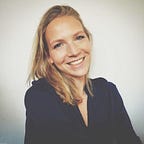Mission Australia and the SEIFA index
Mission Australia first crossed Civita’s path in November 2018 in its first data for good hackathon.
During one afternoon, multiple teams had worked on the same question: how can Mission Australia identify neighbourhoods across Australia with high giving capacity that are near its services?
A year and half past, during which some of the volunteers worked sporadically on the project with Yael Wasserman, who is senior manager at the CRM and analytics team at Mission Australia.
In April 2020, the project found a second life when Mission Australia and Civita reconnected to complete the project. The start of the Covid-19 crisis had shaken the not-for-profit world and, now more than ever, it was time to reduce costs, uncover new ways to find more donors, and help the important mission of the organisation: “combatting homelessness, assisting disadvantaged families and children, addressing mental health issues, fighting substance dependencies, and much more.”
Clarity and precision
The assumptions behind Mission Australia’s challenge was that, while many Australians are aware of the problem of homelessness, they usually don’t know how it impacts their own neighbourhoods. By being made aware of their own proximity with the societal challenges that Mission Australia is tackling, the organisation wanted to give to households a sense of connection and responsibility to the issue.
With over 500 branches in Australia, Mission Australia has the potential to impact a large number of these potential donors in areas that are both close to their services and with a higher donation capacity. By crossing these two data sources — high donations capacity and closeness to the charity and its services — , Mission Australia believed they could find the sweet spot of potential donors who could both be more sensitive to the cause and have enough means to support it.
Because Yael had worked previously on this project with the last volunteers, he knew exactly what he needed and how to communicate it to the volunteers. That level of clarity and precision was a key factor of success for Civita’s challenges: the volunteer does know how and where to spend their time on directly, which is more time-efficient for them and the charity.
The challenge was composed in two parts: on one hand, mapping the locations of the Mission Australia branches with the SEIFA index (Socio-Economic Index For Advantage), which is what defines the donation capacity of an area. On the other hand, creating a proximity rank for these branches, where, at a SA1 level, they are ranked based on the proximity with the closest SEIFA area.
The SEIFA index
The SEIFA index was developed by the ABS to rank areas in Australia according to relative socio-economic advantage and disadvantage. Released every five years, the latest version is based on the 2016 Census data and consists of four indexes:
- The Index of Relative Socio-Economic Disadvantage: this index ranks areas on a continuum from most disadvantaged to least disadvantaged. A low score on this index indicates a high proportion of relatively disadvantaged people in an area.
- The Index of Relative Socio-Economic Advantage and Disadvantage: this index ranks areas on a continuum from most disadvantaged to most advantaged. An area with a high score on this index has a relatively high incidence of advantage and a relatively low incidence of disadvantage.
- The Index of Economic Resources: this includes indicators of high and low income, as well as variables that correlate with high or low wealth. Areas with higher scores have relatively greater access to economic resources than areas with lower scores.
- The Index of Education and Occupation: this index focuses on the skills of the people in an area, both formal qualifications and the skills required to perform different occupations. A low score indicates that an area has a high proportion of people without qualifications, without jobs, and/or with low skilled jobs.
These indexes are best interpreted as ordinal measures that rank areas and are typically used to:
- assess the level of services and/or funds an area needs,
- identify new opportunities for organisations, and
- support research linked to socio-economic topics.
A new campaign and a learning opportunity
Jessica Ronina Delos Reyes was the perfect volunteer for this project. She had a great experience in data visualisation and understood quickly the objectives of the project. While she hadn’t worked extensively with geodata in the past, she took this project as an opportunity to learn QGIS and map visualisation on Tableau. Yael presented the results to his management team and designed a campaign to pinpoint the distribution and keep its cost down.
Conclusion
This challenge showed us how the clarity and precision of the charity’s stakeholder contribute greatly to the efficiency and success of a project. The volunteer also had a great set of skills to apply to the challenge and had the opportunity to learn more about a topic she was interested in. Finally, this project is a perfect example of how a mix of private and public data can give new insights to the organisation and uncover more opportunities.
Do you want to know how you can leverage open data for your own organisation or community? Get in touch with our team.
